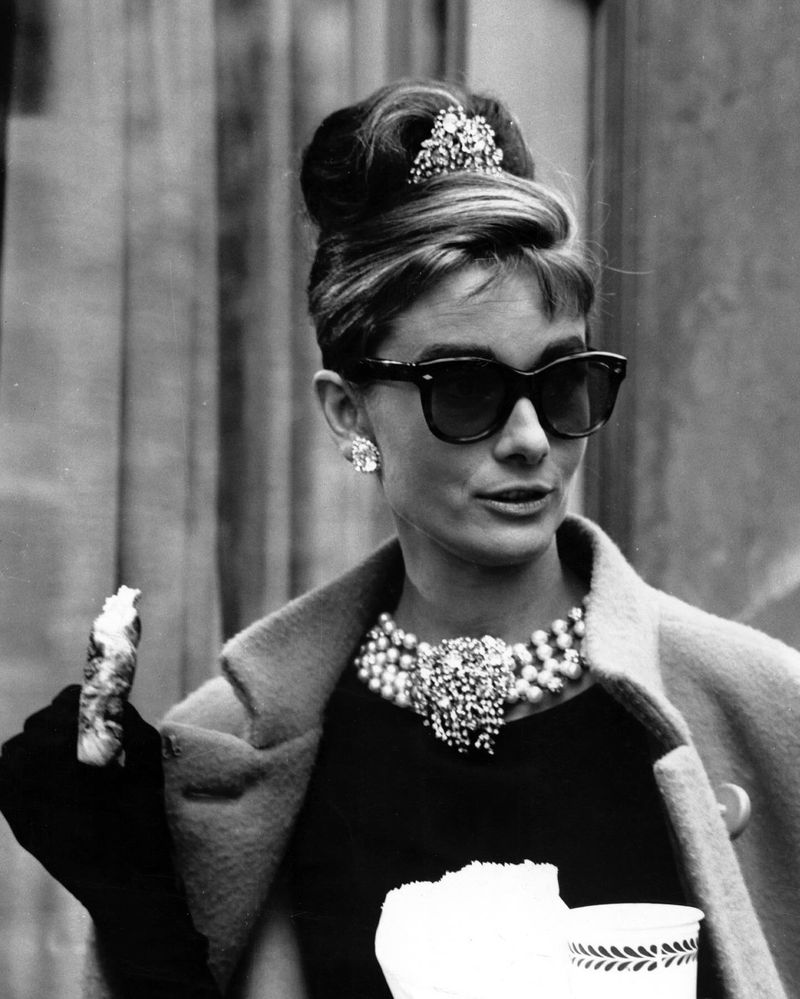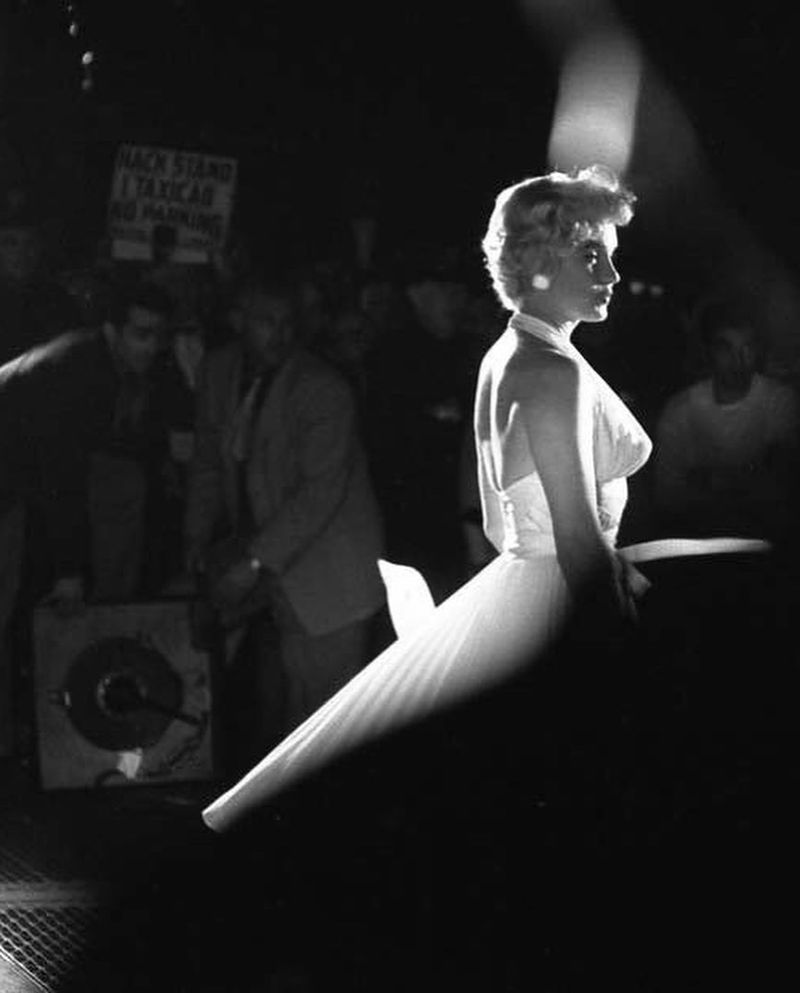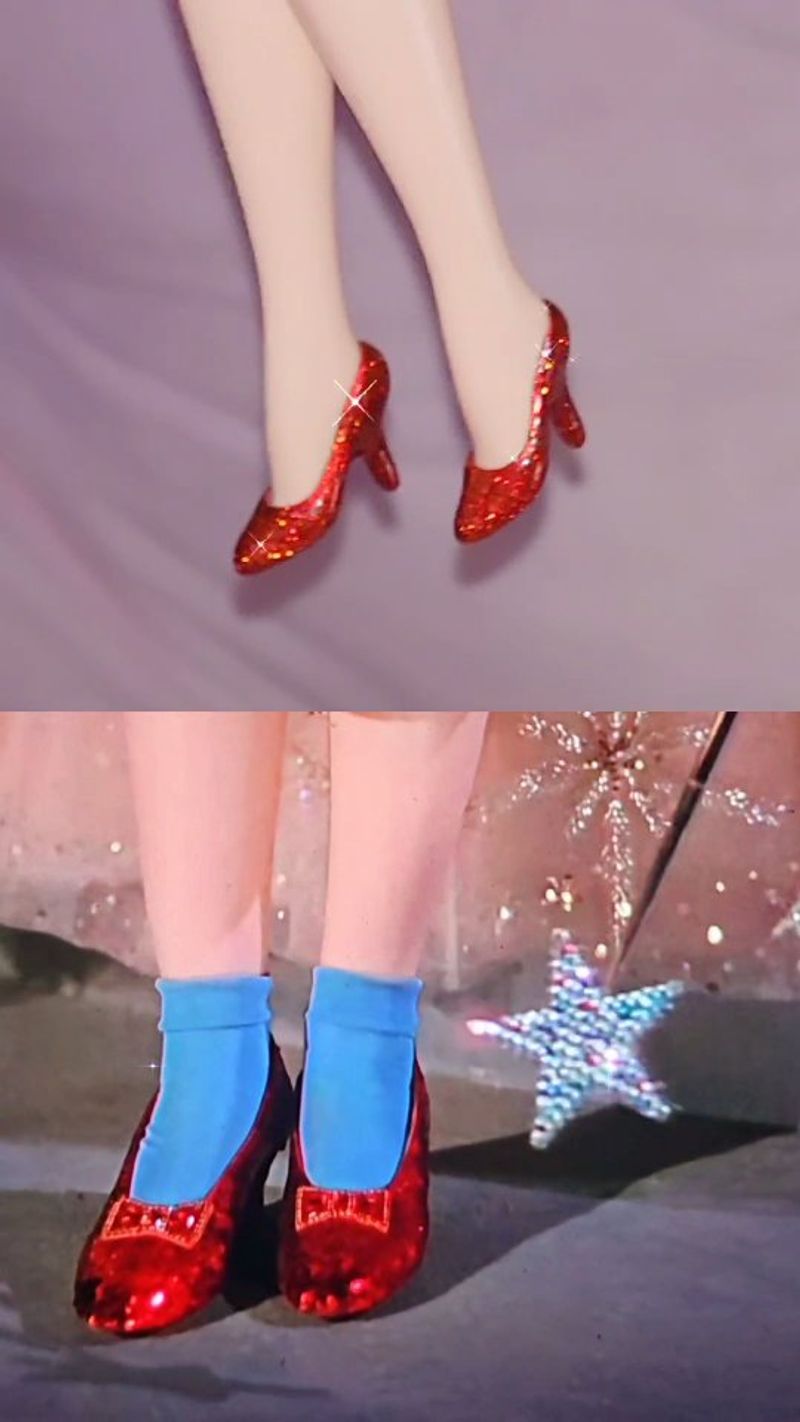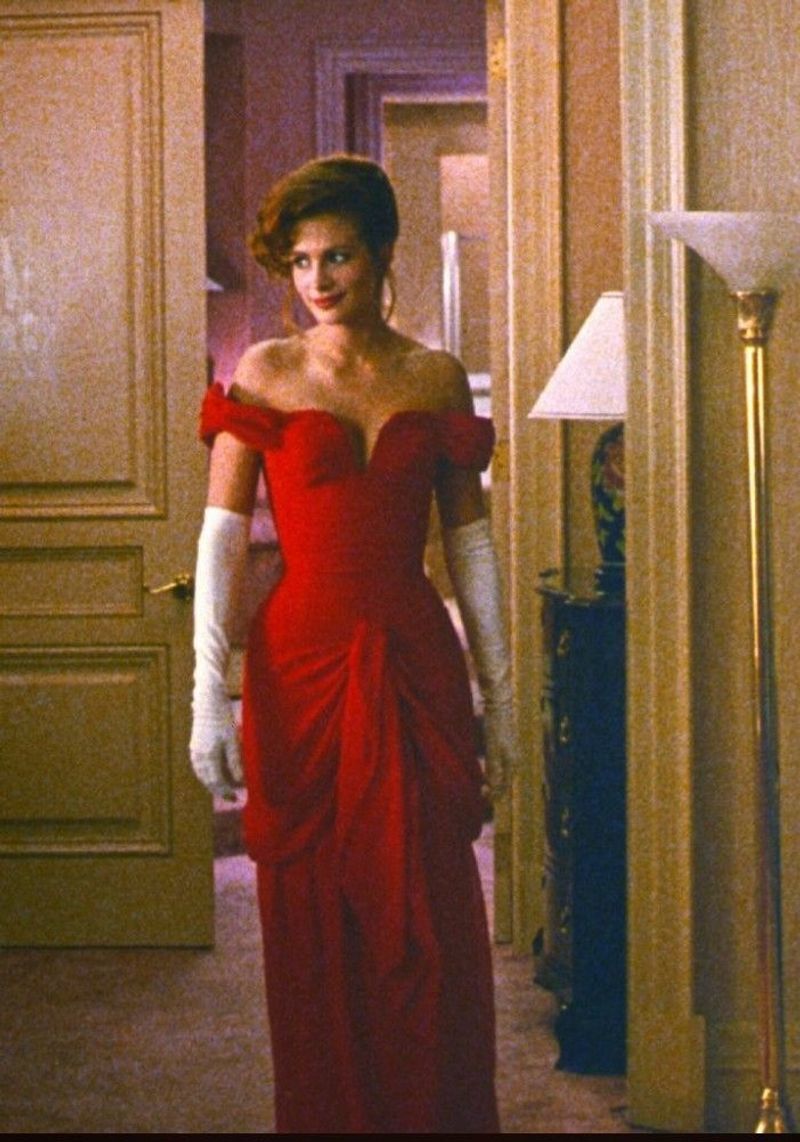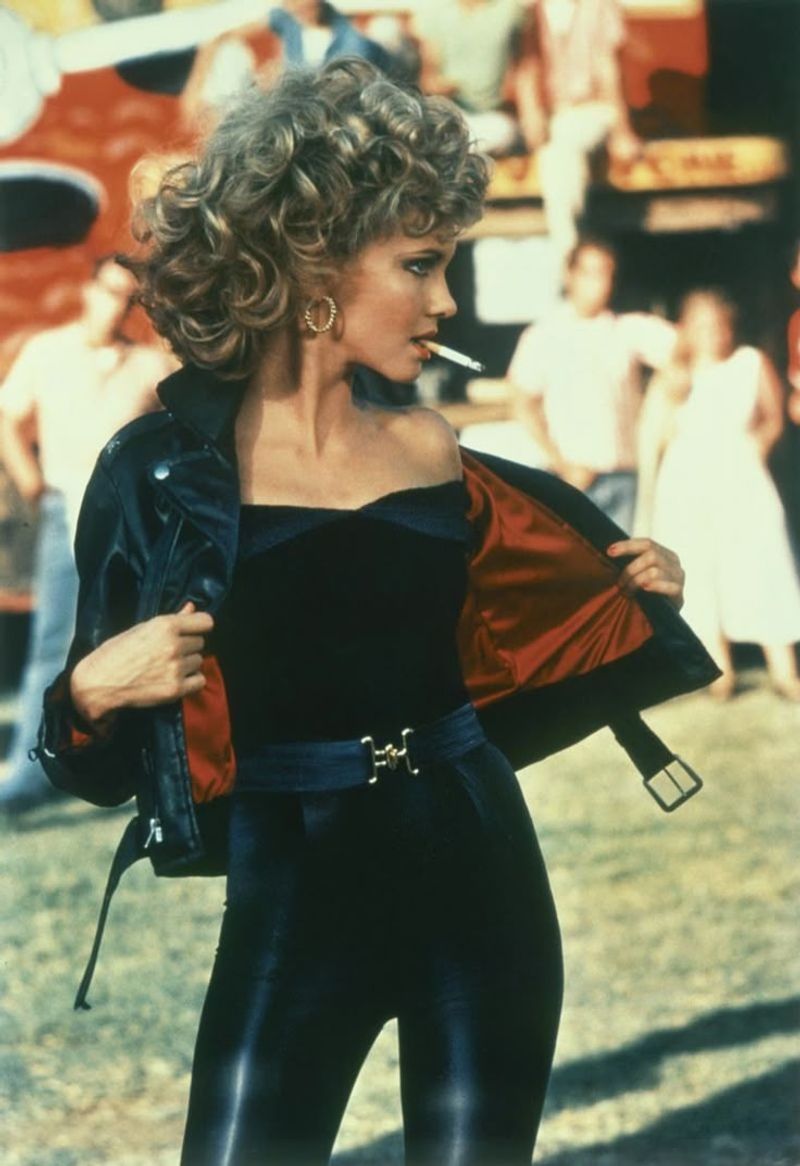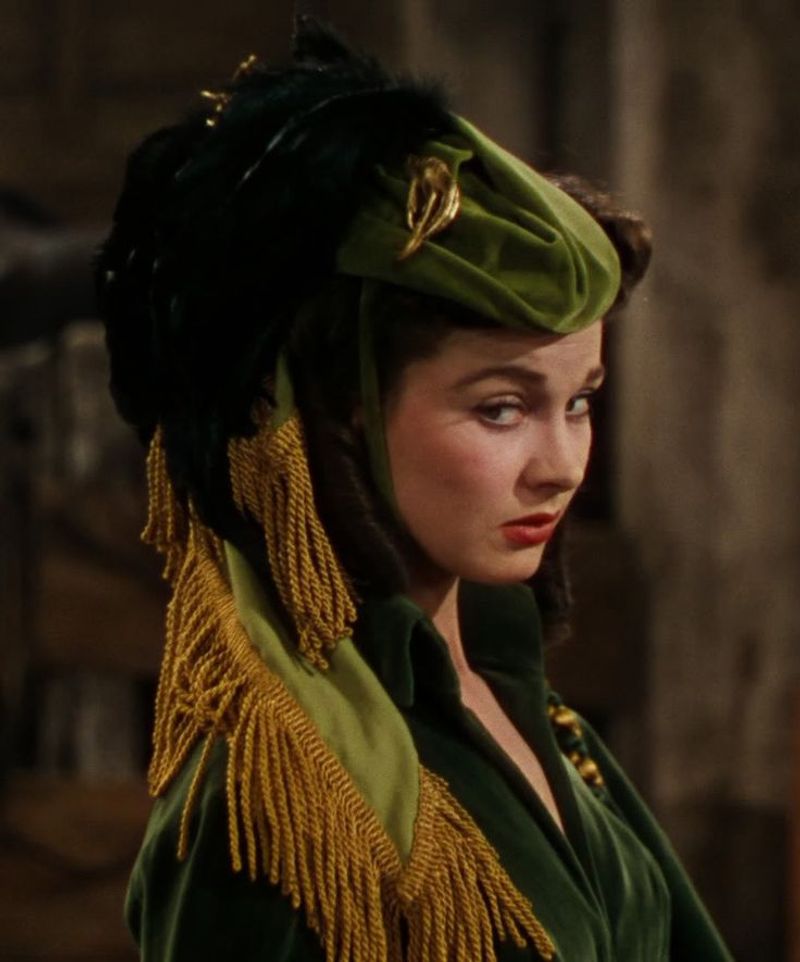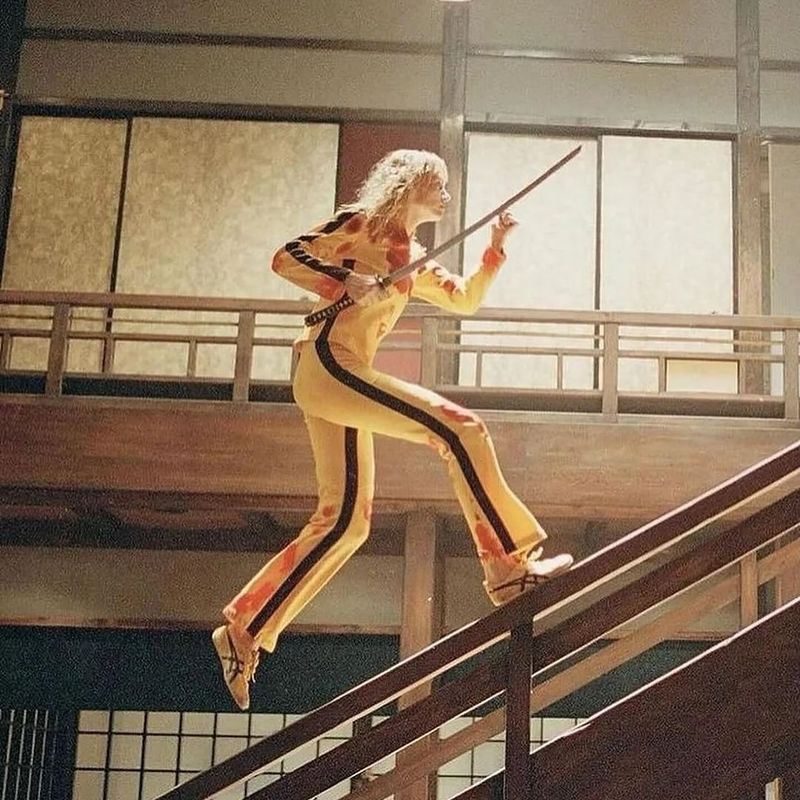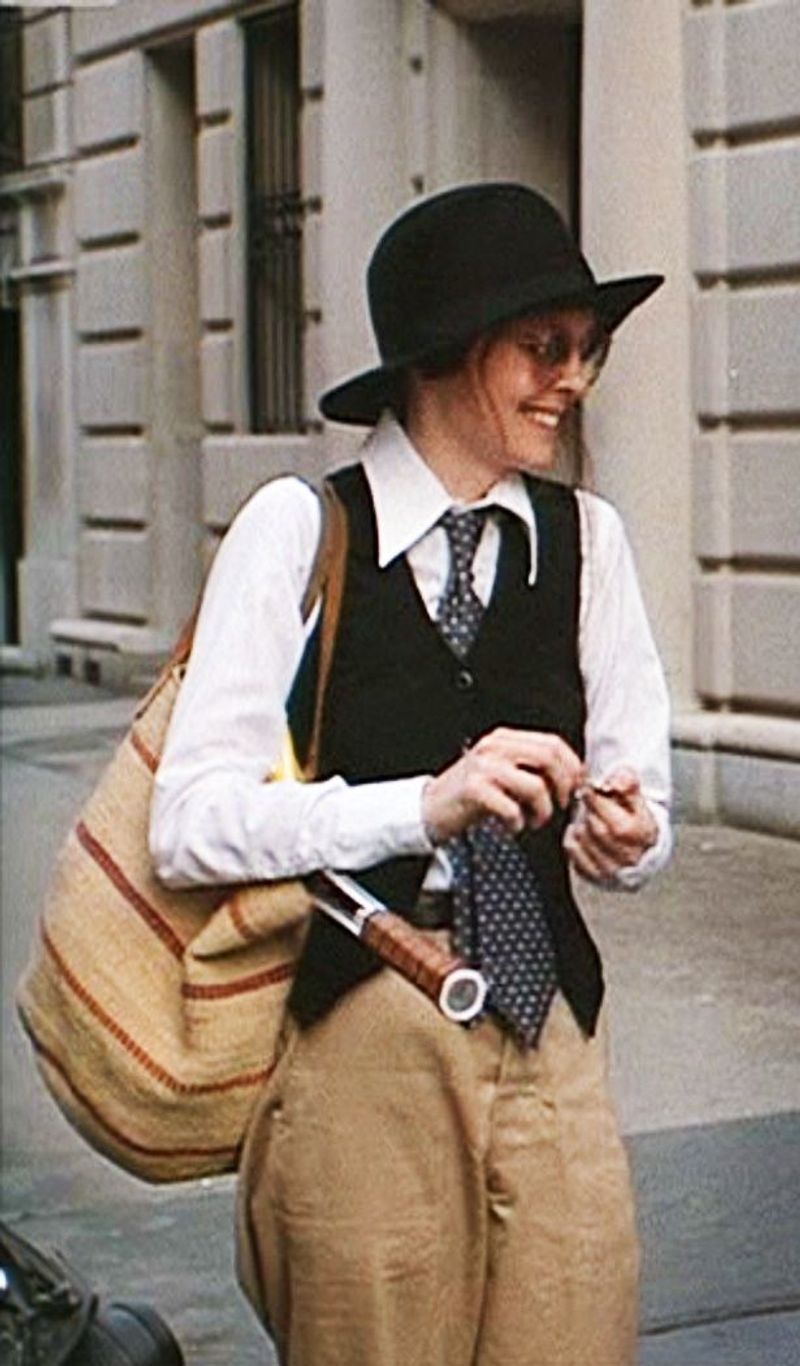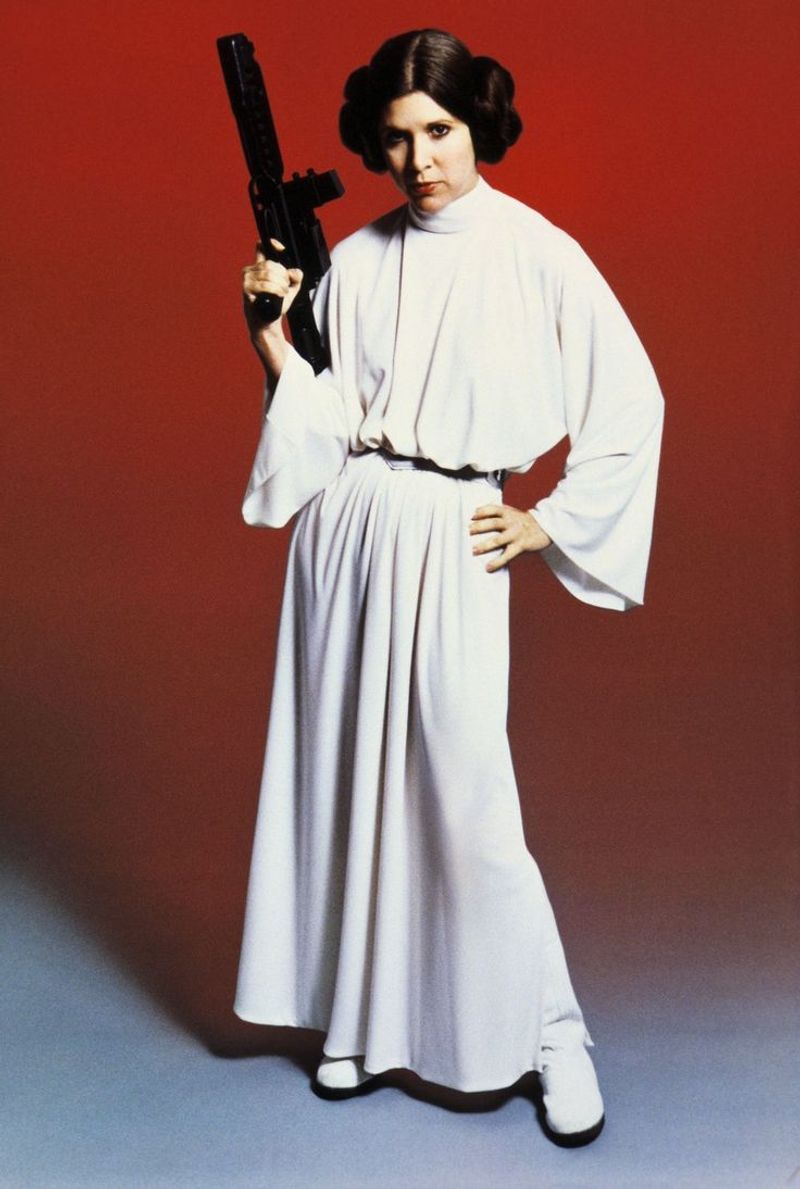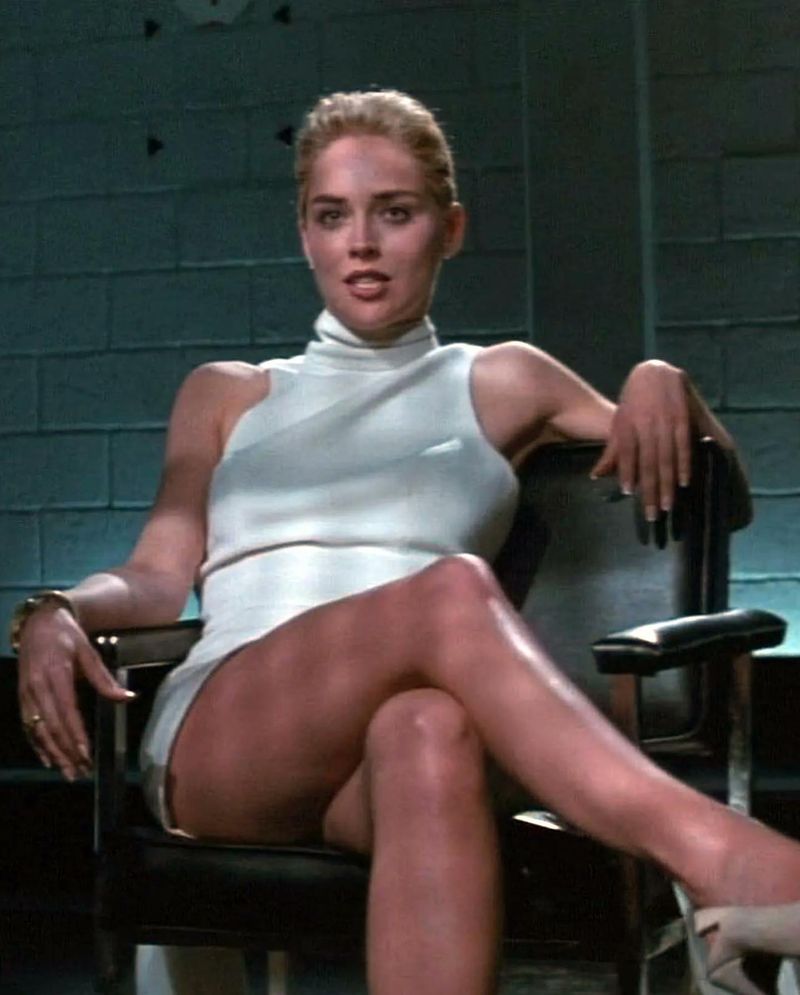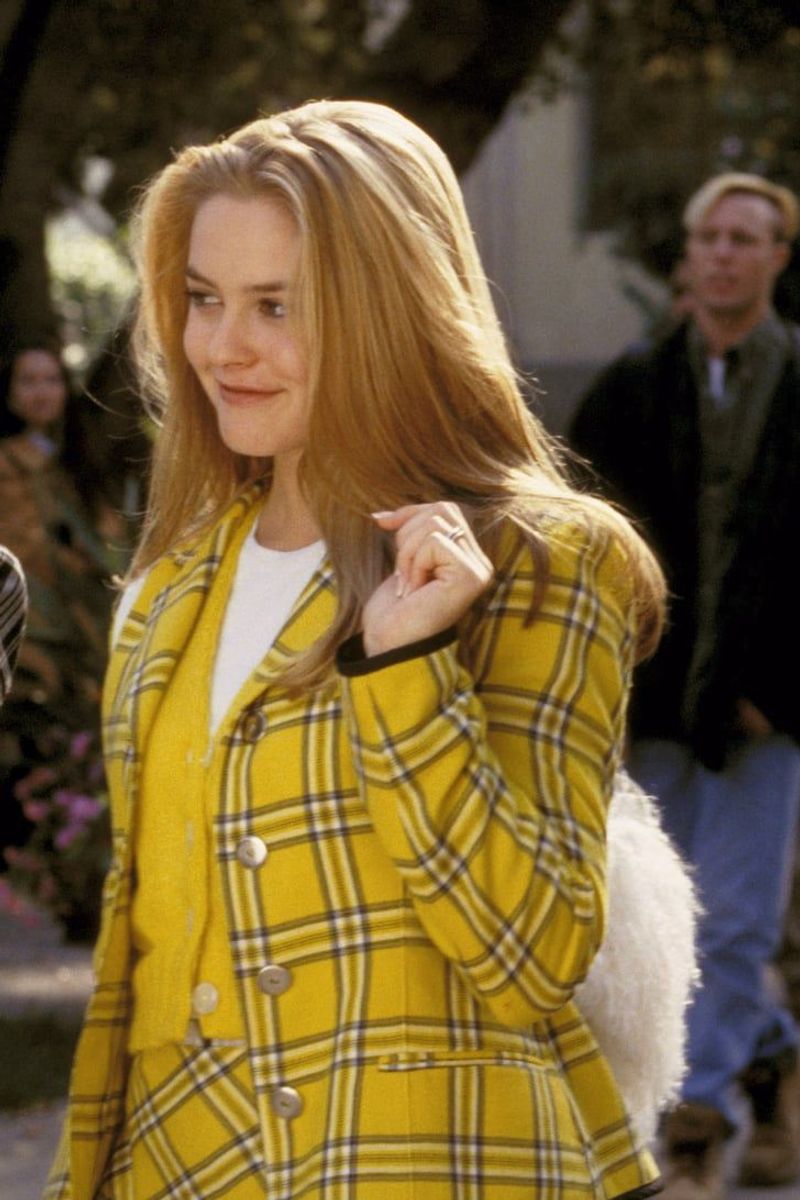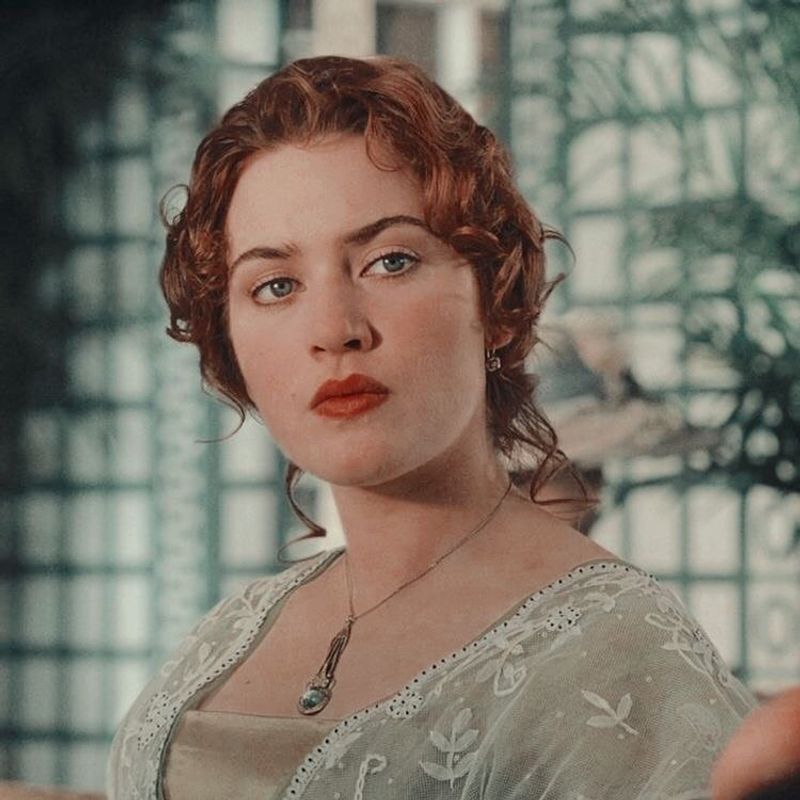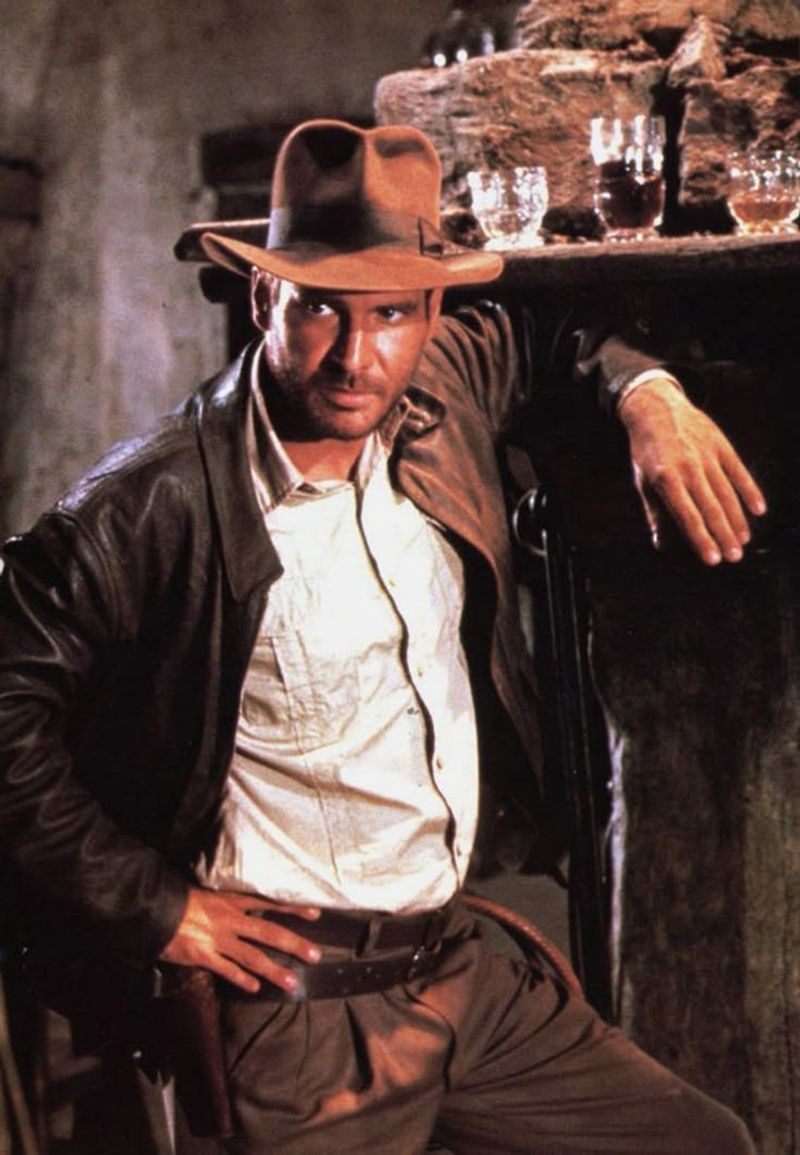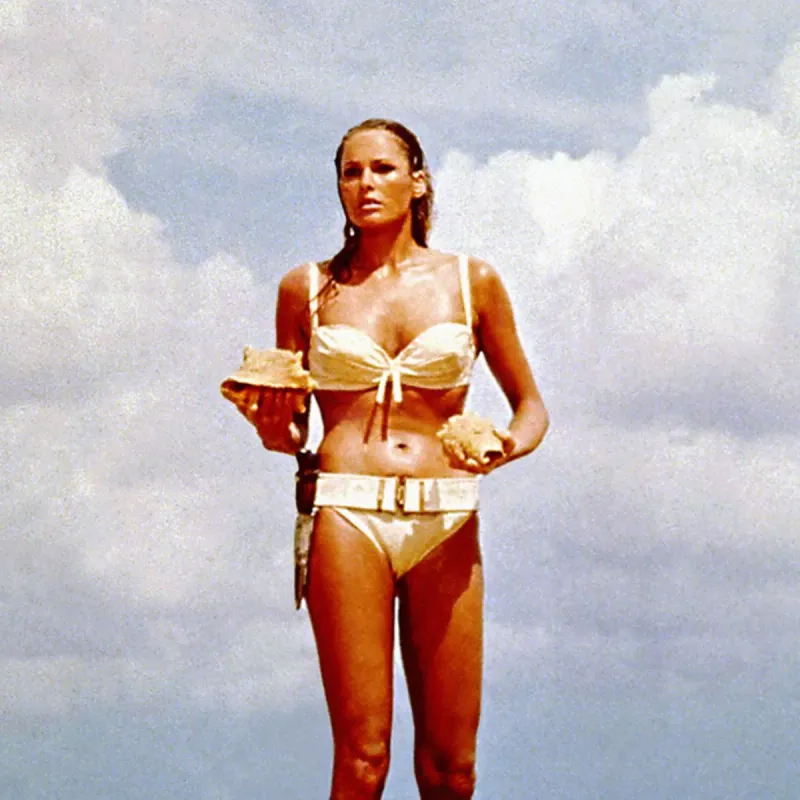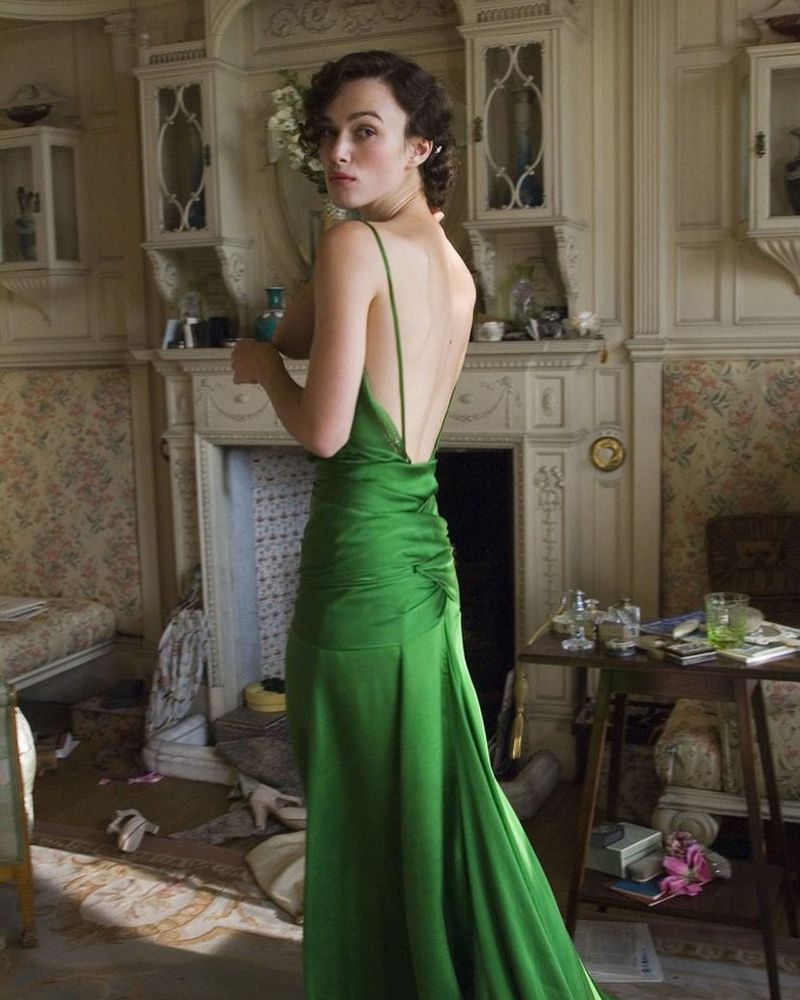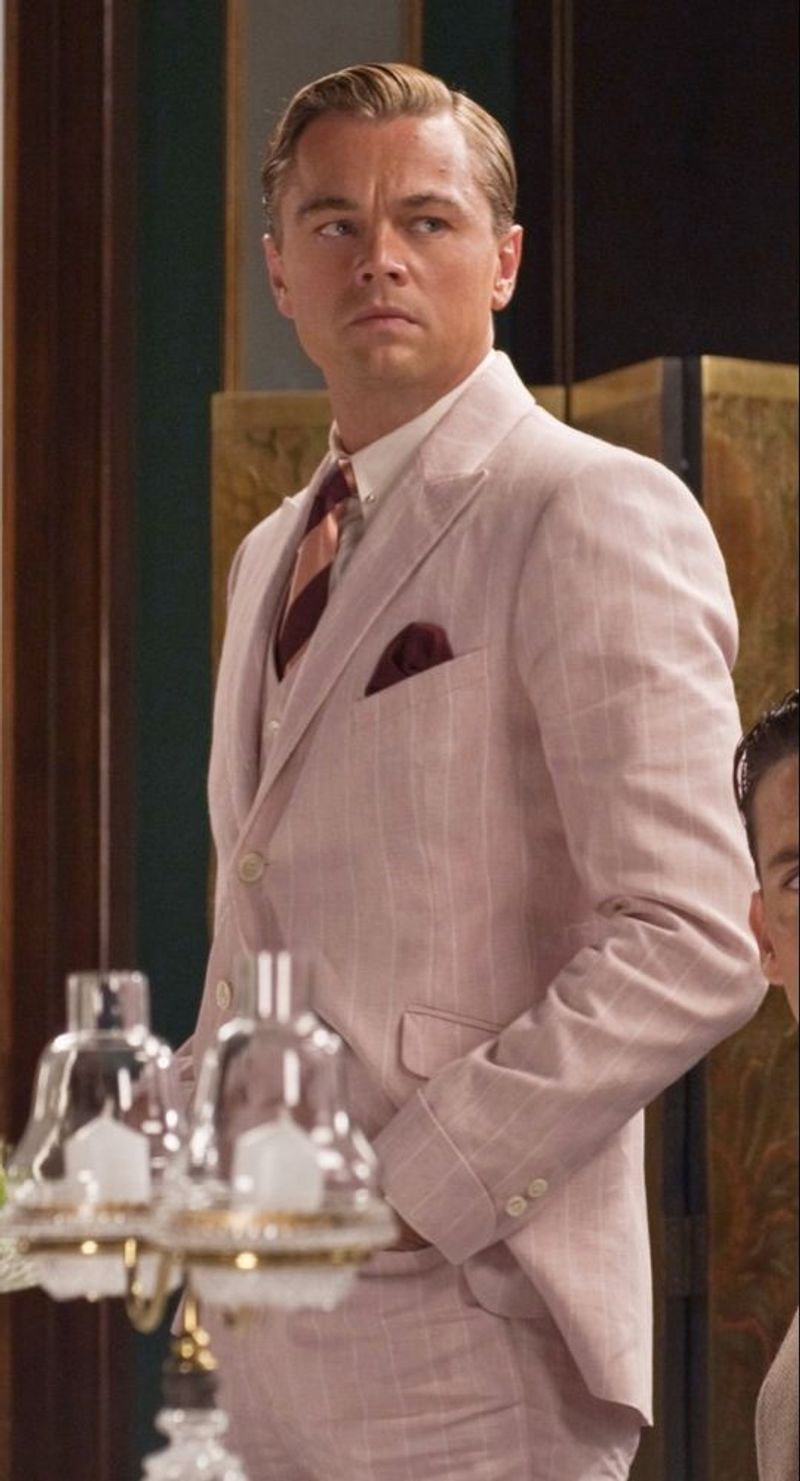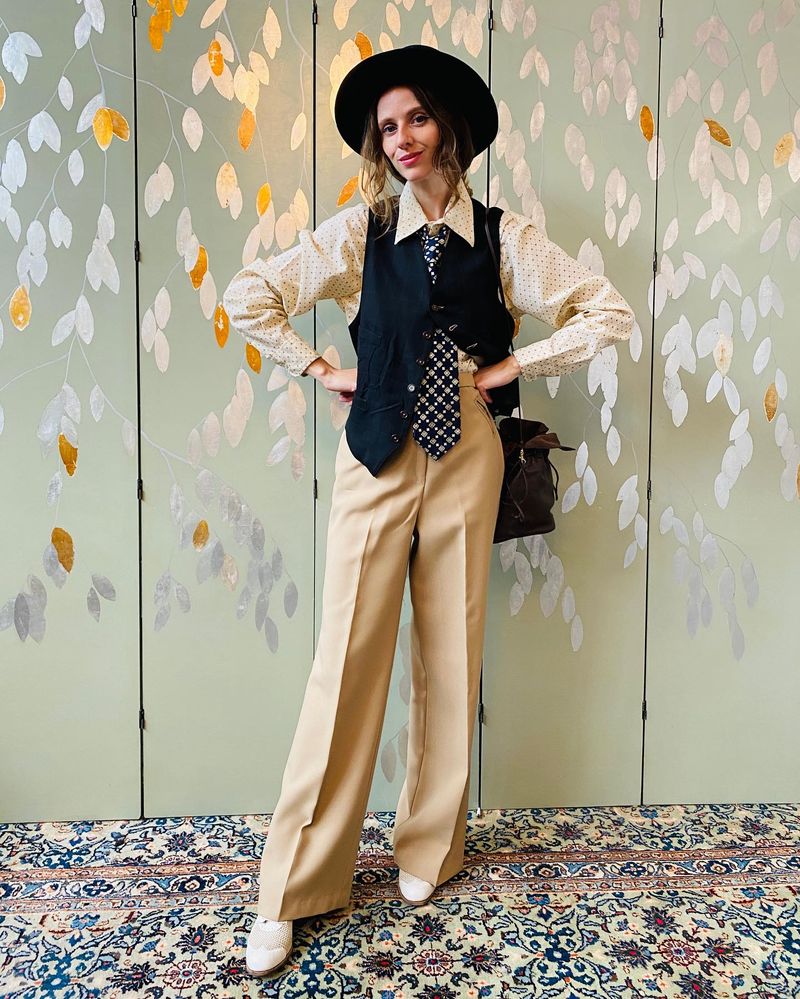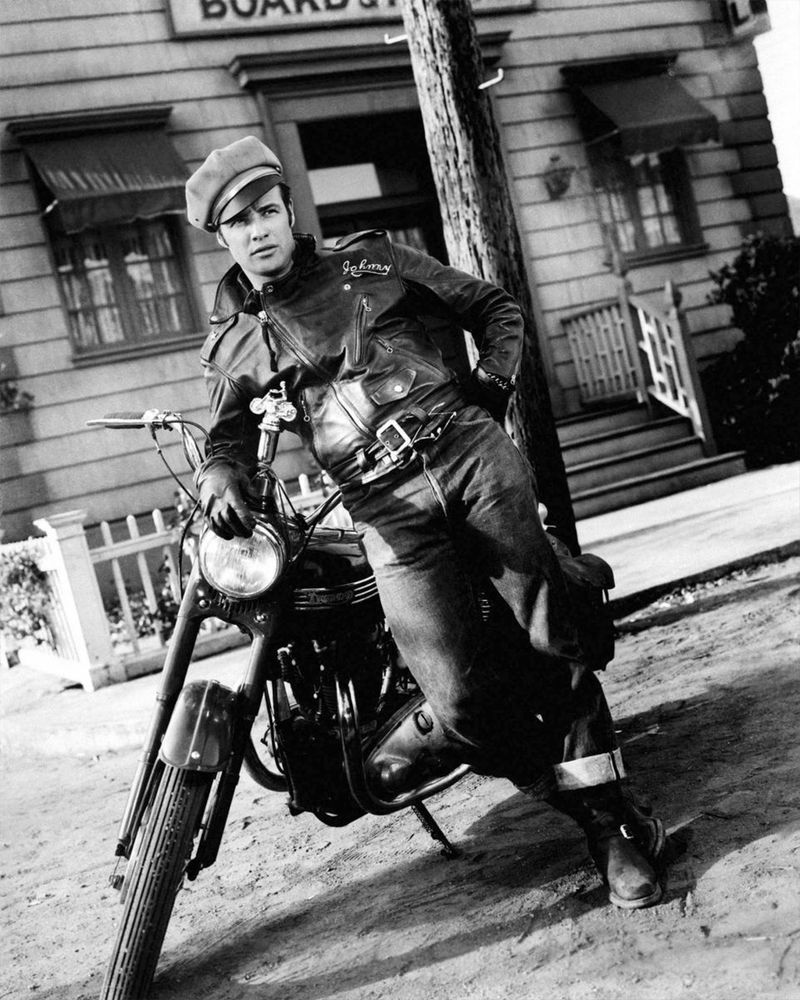20 Iconic Movie Outfits In Hollywood History
Movies create magic not just through storytelling, but through unforgettable fashion moments that stick with us long after the credits roll.
From glamorous gowns to character-defining ensembles, certain film costumes have become cultural touchstones that transcend their original context.
I’ve always been fascinated by how a single outfit can capture a character’s essence or define an entire era of cinema.
These 20 iconic movie looks changed fashion history and continue to inspire designers, Halloween costumes, and everyday style decades after they first appeared on screen.
1. Audrey Hepburn’s Black Dress in Breakfast at Tiffany’s
The moment Audrey Hepburn stepped out of a taxi in that floor-length Givenchy gown, pearls gleaming against black satin, cinema fashion was forever changed. Holly Golightly’s elegant silhouette peering into Tiffany’s window became an instant symbol of sophisticated glamour.
What many don’t realize is that this wasn’t just any little black dress – it was specifically designed by Hubert de Givenchy for Hepburn, cementing one of fashion’s most legendary partnerships. The dress sold at auction in 2006 for an astonishing $807,000.
Beyond its beauty, this outfit represents the character’s complex duality – the elegant exterior masking her troubled reality. Countless designers have reimagined this look, proving that true style never truly fades from memory or relevance.
2. Marilyn Monroe’s White Halter Dress in The Seven Year Itch
Nothing says “movie magic” quite like Marilyn standing over that subway grate, her pleated white dress billowing upward as she laughs. This single moment from 1955 transformed a simple white halter dress into perhaps the most recognized clothing item in cinema history.
Costume designer William Travilla created this seemingly effortless masterpiece that perfectly captured Monroe’s playful sensuality. The original dress later sold at auction for a staggering $4.6 million, making it one of the most expensive movie costumes ever sold.
What’s fascinating is how this brief scene – lasting mere seconds in the film – became the defining image of Monroe’s career and a permanent fixture in American pop culture. The dress itself was relatively modest by today’s standards, yet its impact remains unmatched.
3. Dorothy’s Ruby Slippers in The Wizard of Oz
Those sparkling ruby slippers weren’t just magical in the story – they’ve cast a spell over audiences since 1939. Originally silver in L. Frank Baum’s book, MGM changed them to ruby red to showcase the new Technicolor technology, creating an instantly recognizable fashion icon.
Judy Garland’s footwear became so legendary that a pair was stolen from the Smithsonian in 2005 and recovered 13 years later after an FBI sting operation. Several pairs were made for filming, with one selling for $2 million at auction.
The slippers represent more than just pretty footwear – they symbolize Dorothy’s journey, the power of home, and the magic of cinema itself. Their influence extends beyond film into fashion, with countless designers creating ruby-inspired heels that reference this cinematic treasure.
4. John Travolta’s White Suit in Saturday Night Fever
That white three-piece suit turned John Travolta into a cultural phenomenon overnight. The moment Tony Manero struts down the street, paint can swinging, then takes to the illuminated dance floor, fashion history was made. This outfit defined an entire era and became the visual shorthand for disco culture.
Costume designer Patrizia Von Brandenstein found the suit in a Brooklyn shop window, never imagining it would become one of cinema’s most influential outfits. The original sold at auction for $145,000 in 2010.
What makes this look so powerful is how it captures the character’s duality – a working-class guy transformed into dance royalty on Saturday nights. The suit represented escape, aspiration, and the transformative power of style. Decades later, it remains instantly recognizable even to those who’ve never seen the film.
5. Julia Roberts’ Red Opera Gown in Pretty Woman
The transformation of Vivian Ward from streetwalker to sophisticate reached its pinnacle in that stunning red gown. When Julia Roberts steps out in this off-shoulder column dress with white gloves, it’s more than just a pretty outfit – it’s the visual culmination of her character’s journey.
Designer Marilyn Vance created this show-stopping look specifically to highlight Roberts’ best features while symbolizing Vivian’s newfound confidence. The dress sparked countless knockoffs and remains a reference point for elegant evening wear decades later.
What’s remarkable is how this single outfit communicates so much without words – the character’s growth, her inherent elegance, and the film’s fairy tale heart. The color choice was deliberate too – red symbolizing both love and Vivian’s past, creating a visual link between her two worlds.
6. Olivia Newton-John’s Transformation Look in Grease
Sandy’s transformation from good girl to greaser queen remains one of cinema’s most jaw-dropping makeovers. Those skin-tight black pants, off-shoulder top, and red heels created the ultimate “good girl gone bad” moment that had audiences gasping in theaters.
Costume designer Albert Wolsky deliberately chose this stark contrast to Sandy’s previous pastel wardrobe, creating visual shorthand for her character development. The pants were so tight that Newton-John reportedly had to be sewn into them before filming!
Beyond just looking fabulous, this outfit represents Sandy taking control of her identity and refusing to be boxed in by others’ expectations. The ensemble spawned countless Halloween costumes and remains instantly recognizable over 40 years later. More importantly, it captures that universal teenage desire to reinvent oneself and break free from expectations.
7. Vivien Leigh’s Curtain Dress in Gone with the Wind
Necessity became iconic when Scarlett O’Hara transformed velvet curtains into a showstopping gown. This emerald green dress with tasseled details perfectly captured her resourcefulness and determination to never be poor again. The dress itself became a symbol of Southern resilience.
Designer Walter Plunkett created this masterpiece to showcase both Scarlett’s ingenuity and her vanity. The dress weighed nearly 30 pounds due to the heavy velvet material, requiring significant strength from Leigh during filming.
What makes this outfit truly special is the story behind it – Scarlett using the only valuable thing left (curtains) to create an impression of wealth and secure her future. The dress represents her complex character: practical yet vain, determined yet desperate. Its influence extended beyond film into wartime fashion, inspiring women to repurpose materials during WWII shortages.
8. Uma Thurman’s Yellow Jumpsuit in Kill Bill
The Bride’s yellow jumpsuit became an instant icon of revenge cinema the moment Uma Thurman stepped onto screen in it. This Bruce Lee-inspired outfit with black stripes down the sides transformed into the ultimate symbol of female vengeance and martial arts mastery.
Costume designer Catherine Marie Thomas created this look as a direct homage to Bruce Lee’s famous yellow tracksuit from Game of Death. Tarantino’s choice to dress his female protagonist in this masculine-coded outfit was a deliberate subversion of action movie tropes.
The suit’s practicality combined with its visual impact makes it perfect for both brutal fight sequences and unforgettable cinematic moments. The bright yellow color ensures The Bride is always the visual focus of each frame, drawing the eye and emphasizing her deadly skills. Halloween parties have never been the same since this outfit appeared in 2003.
9. Diane Keaton’s Menswear Look in Annie Hall
Fashion revolution happened when Diane Keaton appeared on screen in oversized men’s clothing, creating a look so influential it changed how women dressed for years. Her character’s vests, ties, and baggy pants weren’t just costume choices – they represented female independence and the rejection of traditional gender expectations.
What’s fascinating is that this wasn’t really a “costume” at all. Keaton brought her own personal style to the role, working with costume designer Ruth Morley to create Annie’s distinctive look. The outfit represented a new kind of female character – intellectual, independent, and unconcerned with traditional femininity.
The impact was immediate and lasting. Women began adopting menswear elements into their wardrobes, and designers like Ralph Lauren built entire collections around this aesthetic. Even today, the “Annie Hall look” remains shorthand for effortless, intellectual chic that prioritizes comfort over conventional attractiveness.
10. Carrie Fisher’s White Gown and Buns in Star Wars
Princess Leia’s flowing white gown and side buns created an instantly recognizable silhouette that transcended science fiction to become a cultural touchstone. This seemingly simple outfit established Leia as both regal and practical – a princess who could fight alongside the rebellion.
Costume designer John Mollo created this look to be simultaneously futuristic and timeless. The pristine white symbolized Leia’s moral purity while contrasting dramatically with Darth Vader’s black armor. Fisher later revealed the dress was so form-fitting she couldn’t wear underwear beneath it – director George Lucas famously telling her “there’s no underwear in space.“
The hairstyle drew inspiration from Mexican revolutionary women’s “squash blossom” style and Native American Hopi traditions. This cultural fusion created something that felt both ancient and futuristic – perfect for the film’s lived-in universe where the past and future constantly intertwine.
11. Sharon Stone’s White Dress in Basic Instinct
A simple white dress became the most controversial movie outfit of the 1990s through one notorious interrogation scene. Stone’s character Catherine Tramell uses this seemingly modest dress as a weapon, manipulating the all-male police force through calculated exposure.
Costume designer Ellen Mirojnick chose this high-necked, sleeveless dress precisely because it appeared so innocent and proper. The contrast between its conservative appearance and how it was used created the scene’s shocking impact.
Beyond the controversy, this outfit perfectly embodied the character’s calculating nature – using the appearance of innocence (white color, modest cut) as cover for manipulation. The dress became a symbol of female sexual power and the male gaze in cinema. Stone later claimed she wasn’t fully aware how explicit the scene would be, adding another layer to the outfit’s complex legacy in film history.
12. Alicia Silverstone’s Yellow Plaid Outfit in Clueless
Cher Horowitz strutting through her high school in that yellow plaid skirt suit redefined teen fashion overnight. This perfectly coordinated ensemble – with matching knee-high socks and Mary Janes – became the ultimate symbol of 90s affluent teen style that continues influencing fashion decades later.
Costume designer Mona May created over 60 outfits for Silverstone’s character, but this yellow Dolce & Gabbana-inspired look became the film’s defining image. The outfit wasn’t just stylish – it communicated Cher’s meticulous personality, wealth, and her attempt to appear more grown-up than she was.
What’s remarkable is how this single outfit sparked a genuine fashion revolution. Plaid skirts and coordinated sets suddenly appeared in malls across America, and the influence continues with periodic revivals on runways. The look perfectly balanced being aspirational yet achievable, making it the rare movie costume that translated directly to real-world wardrobes.
13. Kate Winslet’s Blue Heart Necklace Look in Titanic
The “Heart of the Ocean” necklace against Rose’s bare skin created one of cinema’s most memorable images. When Jack draws Rose wearing nothing but this stunning blue diamond, the necklace becomes more than jewelry – it represents wealth, forbidden desire, and the film’s central romance.
Costume designer Deborah Lynn Scott worked with London jeweler Asprey & Garrard to create this fictional piece, inspired by the Hope Diamond. After the film’s success, replicas sold by the millions, becoming one of the most popular movie merchandise items ever.
What makes this “costume” so powerful is its minimalism – the stark contrast between the priceless gem and Rose’s vulnerability. The necklace serves as visual shorthand for the film’s themes of class division, with the blue stone symbolizing both the ocean depths and the cold weight of societal expectations. Few film accessories have achieved such iconic status or carried so much narrative weight.
14. Judy Garland’s Gingham Dress in The Wizard of Oz
That simple blue gingham dress with white blouse transformed from ordinary farm girl attire into a symbol of innocence, home, and the American heartland. Dorothy’s outfit stands in stark contrast to the technicolor fantasy of Oz, visually reinforcing her desire to return to Kansas.
Costume designer Adrian created multiple versions of this dress, with the blue color specifically chosen to work with the new Technicolor film process. The dress appears almost sepia-toned in the Kansas scenes, then vibrantly blue once Dorothy enters the colorful world of Oz.
More than just cute, this outfit represents Dorothy’s journey perfectly – she remains unchanged at her core (keeping the same dress) while everything around her transforms. The simple cotton fabric contrasts with the elaborate costumes of Oz’s inhabitants, emphasizing Dorothy’s genuine, unaffected nature. One original dress sold at auction in 2015 for $1.56 million.
15. Harrison Ford’s Fedora and Leather Jacket in Indiana Jones
Adventure got a dress code when Harrison Ford donned that weathered leather jacket and battered fedora. This seemingly simple outfit created such a distinctive silhouette that even a child’s shadow cast in this shape is instantly recognizable as Indiana Jones.
Costume designer Deborah Nadoolman deliberately distressed the jacket and hat to show Jones’ experience and rugged lifestyle. She based the look on Humphrey Bogart in The Treasure of the Sierra Madre, aiming for a timeless quality that wouldn’t look out of place in any decade.
The outfit perfectly embodies the character – practical yet distinctive, academic yet rugged. The hat serves both narrative purposes (Jones never loses it for long) and practical ones (hiding wire rigs for stunts). This costume works so well because it feels like clothing rather than a costume – worn-in, functional, and completely authentic to the character’s adventurous life.
16. Ursula Andress’ White Bikini in Dr. No
Cinema history changed forever when Ursula Andress emerged from Caribbean waters in that white bikini, knife strapped to her hip. This seemingly simple swimwear became the template for the “Bond girl” and created one of film’s most imitated scenes.
Costume designer Tessa Prendergast created this iconic look, with Andress herself adding the belt to hold her diving knife. The bikini later sold at auction for over $60,000, cementing its place in movie history.
The genius of this costume lies in its perfect balance – simultaneously innocent (white color) and dangerous (the knife), beautiful yet practical for its island setting. The scene was so influential that 40 years later, the franchise deliberately referenced it with Halle Berry’s orange bikini in Die Another Day. Few movie costumes have been so precisely copied or instantly recognizable from just a silhouette.
17. Keira Knightley’s Green Dress in Atonement
Sometimes a dress isn’t just a dress – it’s the centerpiece of cinematic storytelling. Keira Knightley’s emerald green evening gown with its daringly low back became the visual focal point of Atonement, representing both forbidden desire and the night everything changed for the characters.
Costume designer Jacqueline Durran created this backless silk masterpiece to capture both the 1930s setting and the character’s sexual awakening. The dress won a BAFTA and was voted the best costume of all time in a 2008 Sky Movies poll.
What makes this dress exceptional is how deeply it’s integrated into the narrative. Its rich green color symbolizes jealousy, foreshadowing the story’s tragic turn. The way it moves in crucial scenes – particularly during the library encounter – makes it almost a character itself. Few film costumes have so perfectly embodied a story’s themes while remaining breathtakingly beautiful.
18. Leonardo DiCaprio’s Pink Suit in The Great Gatsby
Gatsby’s pink suit isn’t just stylish – it’s a crucial symbol of his character’s desperate need for acceptance. This single outfit perfectly captures his nouveau riche status, his romantic optimism, and ultimately, his tragic misunderstanding of old money society.
Costume designer Catherine Martin collaborated with Brooks Brothers to create this memorable look, blending 1920s authenticity with modern sensibilities. The suit’s pink color (described as “an apple-blossom pink” in the novel) represents Gatsby’s romantic nature and his attempt to appear sophisticated.
What makes this outfit so powerful is how it embodies the character’s fundamental misunderstanding – Gatsby believes wealth alone will win Daisy back, not realizing his flashy style marks him as an outsider to her social class. The suit becomes visual shorthand for Gatsby’s beautiful dream and its inevitable failure, making it far more than just a fashionable period costume.
19. Diane Keaton’s Red Coat in The Godfather
A splash of red amid darkness created one of cinema’s most shocking visual moments. Kay Adams’ bright red coat stands in stark contrast to the black suits of the Corleone men, making her an outsider to their world in the film’s devastating final scene.
Costume designer Anna Hill Johnstone deliberately chose this vibrant coat to isolate Kay visually from the Corleone family. As the door literally closes on Kay, her red coat becomes the last thing viewers see – a visual punctuation to Michael’s moral downfall.
The brilliance of this costume choice lies in its use of color psychology. Red symbolizes both love and blood – Kay’s love for Michael and the bloody business he’s embraced without her knowledge. This single garment communicates volumes about Kay’s position in the story without a word being spoken. It’s a masterclass in using costume to enhance narrative impact.
20. Marlon Brando’s Leather Jacket in The Wild One
Rebellion found its uniform when Marlon Brando slouched on his motorcycle in that black leather jacket, white t-shirt, and cocked cap. This outfit didn’t just define Brando’s character – it created the visual template for American rebellion that continues influencing fashion today.
Costume designer Olga Lehmann created this look based on actual biker gang attire, but Brando’s magnetic performance transformed it into something mythic. The jacket wasn’t just clothing – it was armor against society’s expectations and a symbol of dangerous freedom.
What’s remarkable is how this outfit transcended the film to become cultural shorthand for youthful rebellion. The look influenced everything from music (early rock and roll) to fashion (the enduring cool of motorcycle jackets) to subsequent film characters. Even James Dean’s iconic look in Rebel Without a Cause owes a debt to Brando’s Wild One ensemble.

